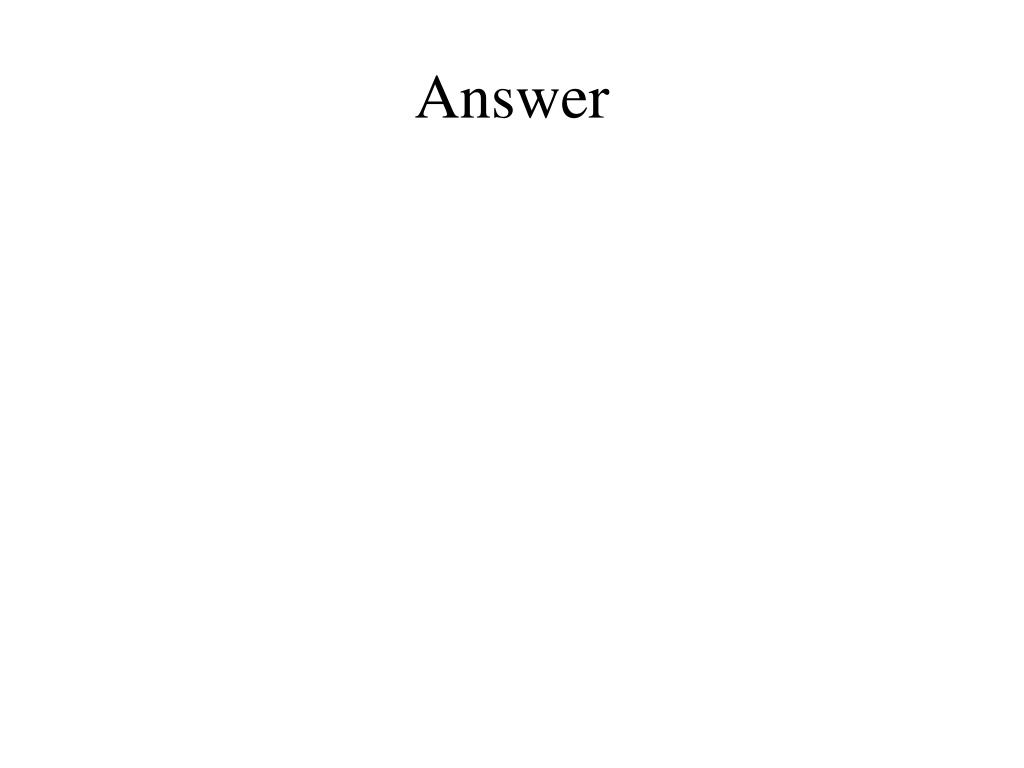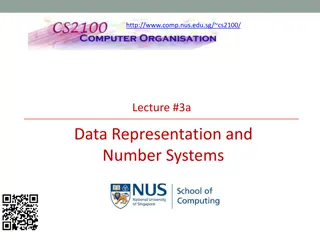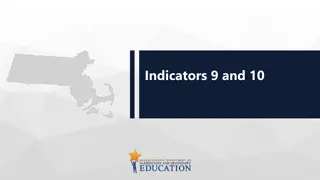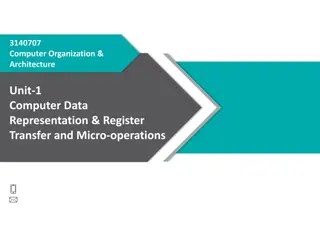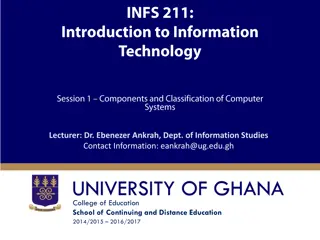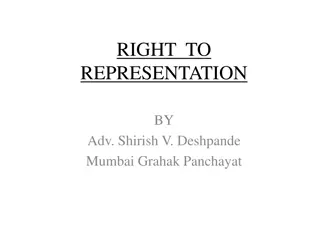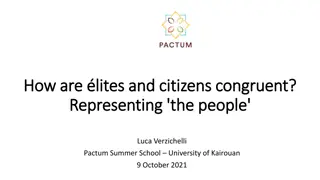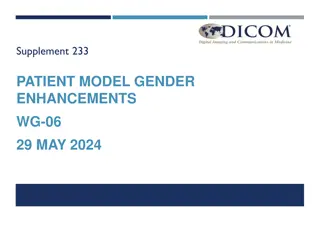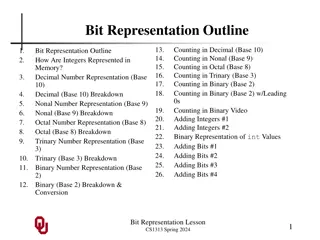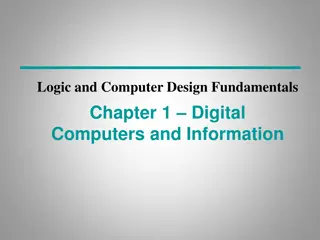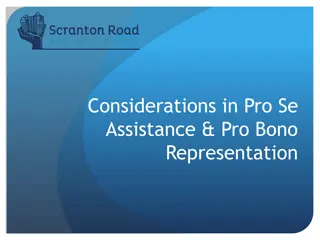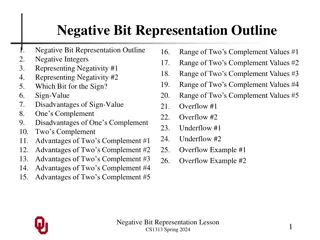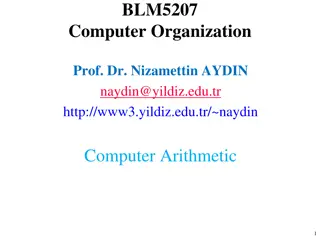Understanding Data Representation in Computer Systems
Explore the various modes of data representation in computer systems, from binary encoded decimals to characters, and learn how these are implemented in hardware. Delve into the significance of word length, addressing boundaries, and hardware details in composite data types. Understand the integer representation methods such as sign-magnitude and examples of converting integers to binary.
Download Presentation

Please find below an Image/Link to download the presentation.
The content on the website is provided AS IS for your information and personal use only. It may not be sold, licensed, or shared on other websites without obtaining consent from the author. Download presentation by click this link. If you encounter any issues during the download, it is possible that the publisher has removed the file from their server.
E N D
Presentation Transcript
4.0 MODES OF DATA REPRESENTATION
numbers, binary encoded decimals, binary addresses, characters, etc.) are implemented directly in hardware for at least parts of the instruction set. Some processors also implement some data structures in hardware for some instructions for example, most processors have a few instructions for directly manipulating character strings.
and number of bits (or bytes). The assembly language programmer must also pay attention to word length and optimum (or required) addressing boundaries. Composite data types will also include details of hardware implementation, such as how many bits of mantissa, characteristic, and sign, as well as their order.
INTEGER 4.1 REPRESENTATION
value of the binary integer. Sign- magnitude is simple for representing binary numbers, but has the drawbacks of two different zeros and much more complicates (and therefore, slower) hardware for performing addition, subtraction, and any binary integer operations other than complement (which only requires a sign bit change).
In sign magnitude, the sign bit for positive is represented by 0 and the sign bit for negative is represented by 1.
the front of this binary equivalence. This makes a total of 7bits, since we are working on an eight bit machine, we have to pad the numbers with 0 so as to make it a total of 8bits. Thus the binary equivalence 0f 52 is 00110100.
This makes a total of 7bits, since we are working on an eight bit machine, we have to pad the numbers with 0 so as to make it a total of 8bits. In this case, the sign bit has to come first and the padded 0 follows. Thus the binary equivalence 0f -52 is 10110100.
two integers is peformed by treating the numbers as unsigned integers (ignoring sign bit), with a carry out of the leftmost bit position being added to the least significant bit (technically, the carry bit is always added to the least significant bit, but when it is zero, the add has no effect). The ripple effect of adding the carry bit can almost double the time to do an addition. And there are still two zeros, a positive zero (all
The Is complement form of any binary number is simply by changing each 0 in the number to a 1 and vice versa.
1111. To change this to 1s complement, the sign bit has to be retained and other bits have to be inverted. Thus, the answer is: 1000. 1 denotes the sign bit.
The actual magnitude representation of -7.25 is 1111.01 but retaining the sign bits and inverting the other bits gives: 1000.10
Find the ones complement of -467 and convert the answer to hexcadecimal.
number in twos complement representation is accomplished by complementing all of the bits and adding one. Addition is performed by adding the two numbers as unsigned integers and ignoring the carry. Two s complement has the further advantage that there is only one zero (all zero bits). Two s complement representation does result in one more negative number (all one bits) than positive numbers.
negative number than positive numbers. Some processors use the extra neagtive number (all one bits) as a special indicator, depicting invalid results, not a number (NaN), or other special codes.
to perform the operation of subtraction by actually performing addition. The 2 s complement of a binary number is the addition of 1 to the rightmost bit of its 1 s complement equivalence.
The 1s complement of -52 is 11001011
Convert -419 to 2s complement and hence convert the result to hexadecimal
The sign magnitude representation of - 419 on a 16 bit machine is 1000000110100011
The Is complement is 1111111001011100
Dividing the resulting bits into four gives an hexadecimal equivalence of FE5D16
2.. base b, then we by an form its b s complement by subtracting each digit of the number from b-1 and adding 1 to the result.
ADDITION OF NUMBERS USING 2 S COMPLEMENT
